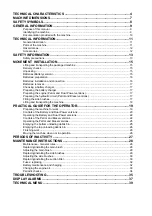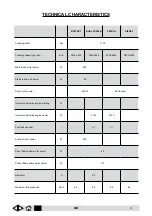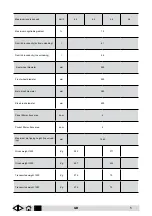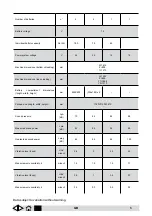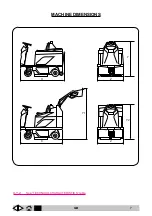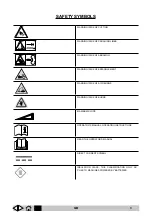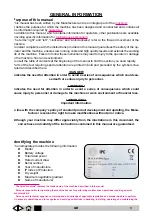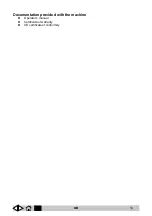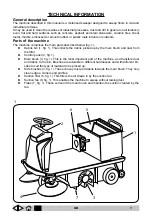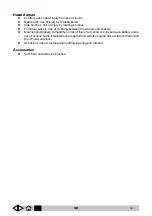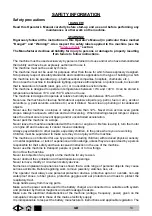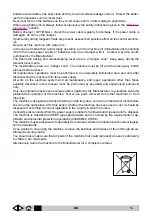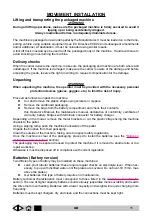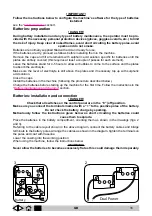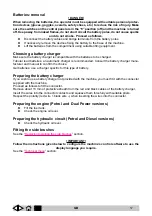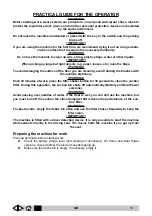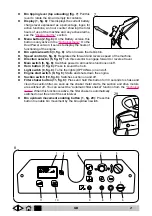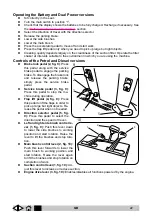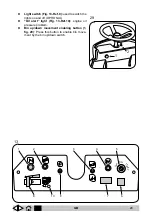
GB
batteries should always be kept clean and dry to avoid surface leakage current. Protect the batter
-
ies from impurities such as metal dust.
Never rest tools on the batteries as they could cause short circuits leading to explosions.
When using battery acid, always follow scrupulously the safety instructions given in the “
” section.
Battery charger ( OPTIONAL ): check the power cable regularly for damage. If the power cable is
damaged, do not use the charger.
If particularly strong magnetic fields are present, assess their possible effect on the control electron
-
ics.
Never wash the machine with water jets.
In the case of malfunction and/or faulty operation, turn the machine off immediately (disconnecting
it from the mains power supply or batteries) and do not tamper with it. Contact a service centre
authorised by the Manufacturer.
The debris bin raising and release/tipping lever area is a “danger zone”. Keep away during the
The motor/battery area is a “danger zone”. The machine must be off and the emergency button
pressed before access.
All maintenance operations must be performed in an adequately illuminated area and only after
disconnecting the machine from the power supply.
All work on the electrical system and all maintenance and repair operations other than those
explicitly described in this manual must be performed by specialist and experienced personnel
only.
Only use original accessories and spare parts supplied by the Manufacturer to guarantee safe and
problem-free operation of the machine. Never use parts removed from other machines or from
other kits.
The machine is designed and constructed to provide ten years’ service from the date of manufacture
shown on the nameplate. After this period, whether the machine has been used or not, it should be
disposed of according to current legislation in the country in which it is used.
It should be disconnected from the power supply, emptied of all liquids and cleaned prior to disposal.
The machine is classified as WEEE type special waste and is covered by the requirements of ap
-
plicable environmental protection regulations (2002/96/EC WEEE).
The machine must be disposed of separately from ordinary waste in compliance with current legisla-
tion and standards.
If you decide to stop using the machine, remove the batteries and dispose of them through an au
-
thorised recycling centre.
You should also make sure that all parts of the machine that could represent a hazard, particularly
to children, are made safe.
Alternatively, return the machine to the Manufacturer for a complete overhaul.
14



